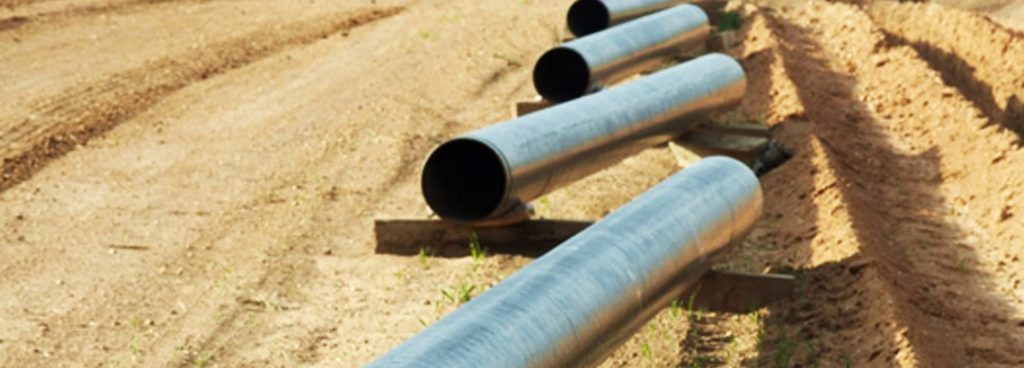Comprehensive Summary of Pipeline Welding Examination Procedures
Pipe welding evaluation procedures play an essential duty in ensuring that welded links satisfy strict sector requirements and specifications. From thorough pre-welding assessments to thorough post-weld evaluations, a well-defined assessment process is essential for keeping the structural stability of pipes.
Pre-welding Evaluation Preparations
Prior to starting the welding procedure, detailed pre-welding assessment preparations are necessary to guarantee the honesty and top quality of the weld joint. These prep work entail a thorough examination of the products to be bonded, the welding equipment, and the work atmosphere. By carrying out complete pre-welding evaluation prep work, prospective problems can be determined and solved early on, leading to high-quality and trustworthy weld joints.
Welding Procedure Certification
Comprehensive pre-welding assessment prep work lay the foundation for the critical procedure of Welding Treatment Certification, making certain the honesty and quality of the weld joint. Welding Treatment Credentials (WPQ) is an important step in the welding process that involves screening and certifying welding procedures to guarantee they satisfy certain criteria and requirements. The WPQ process commonly includes welding procedure spec development, welding treatment certification screening, and documentation of the results.
During welding procedure specification advancement, crucial details such as the welding procedure, welding products, joint design, and welding criteria are specified to develop a detailed procedure. Consequently, welding treatment certification testing is performed to confirm the recommended procedure's honesty. This testing usually entails welding examination vouchers that are subjected to various mechanical and non-destructive examinations to evaluate the weld's top quality and adherence to the specified criteria.
In-process Weld Assessment
Throughout the welding process, in-process weld evaluation plays an essential duty in guaranteeing the quality and stability of the weld joint - Pipeline Welding Inspection. This kind of examination includes keeping an eye on the welding specifications, examining the weld grain development, and identifying any type of possible defects or stoppages as they take place. By carrying out in-process weld assessments, welding operators can immediately deal with any kind of problems that might emerge, therefore stopping additional problems and making certain that the last weld fulfills the required specifications
Common methods made use of for in-process weld assessment consist of aesthetic inspection, fluid penetrant screening, magnetic fragment testing, ultrasonic testing, and radiographic testing. Overall, in-process weld inspection is vital for maintaining the top quality and dependability of welded pipelines.
Non-destructive Testing (NDT)
Non-destructive Screening (NDT) is an important approach employed in pipe welding examination to assess the stability of weld joints without triggering damage to the welded structure. By utilizing various NDT strategies, examiners can examine the top quality of welds and determine any kind of issues or discontinuities that may jeopardize the architectural soundness of the pipeline. Typical NDT techniques utilized in pipe welding evaluation include Radiographic Screening (RT), Ultrasonic Find Out More Screening (UT), Magnetic Particle Checking (MPT), Liquid Penetrant Testing (LPT), and Visual Screening (VT)
RT entails the use of X-rays or gamma rays to generate photos of the inner structure of the weld, allowing examiners to identify defects such as porosity, cracks, or insufficient combination. UT utilizes high-frequency audio waves to detect flaws underneath the surface of the weld, supplying detailed info regarding the size and area of flaws. MPT and LPT are used to determine surface-breaking issues by applying penetrant liquids or magnetic fragments to the weld area. In addition, VT includes visual examination of welds this website to identify any type of visible imperfections.
Post-weld Examination and Paperwork

Paperwork of post-weld examination searchings for is crucial for preserving quality assurance documents and making certain compliance with market standards and laws. In-depth reports should consist of info regarding the assessment techniques used, the place and nature of any flaws located, and any kind of restorative activities taken - Pipeline Welding Inspection. Appropriate paperwork not just offers as a record of the weld's high quality but likewise aids in future upkeep and examination processes
Conclusion

Finally, pipe welding inspection procedures play an important role in making certain the top quality and honesty of welds. From pre-welding inspections to post-weld documents, each step is necessary in maintaining the safety and performance of pipelines. By adhering to recognized treatments and performing detailed evaluations, possible flaws can be identified and dealt with prior to they lead to pricey repairs or failings. On the whole, adherence to proper evaluation procedures is crucial to the success of pipe welding jobs.
From careful pre-welding examinations to comprehensive post-weld evaluations, a distinct assessment procedure is essential for keeping the structural stability of pipelines. By carrying out in-process weld examinations, welding operators can promptly resolve any type of problems that may develop, thereby preventing more flaws and guaranteeing that the last weld satisfies the called for requirements.
Typical approaches utilized for in-process weld examination include aesthetic inspection, liquid penetrant testing, magnetic fragment testing, ultrasonic screening, and radiographic testing.Non-destructive Screening (NDT) is a vital technique utilized in pipeline welding assessment to analyze the stability of weld joints without creating damages to the welded structure. Post-weld assessment includes different approaches to examine the welds for problems, including aesthetic evaluation, color penetrant testing, more magnetic bit testing, ultrasonic testing, and radiographic screening.